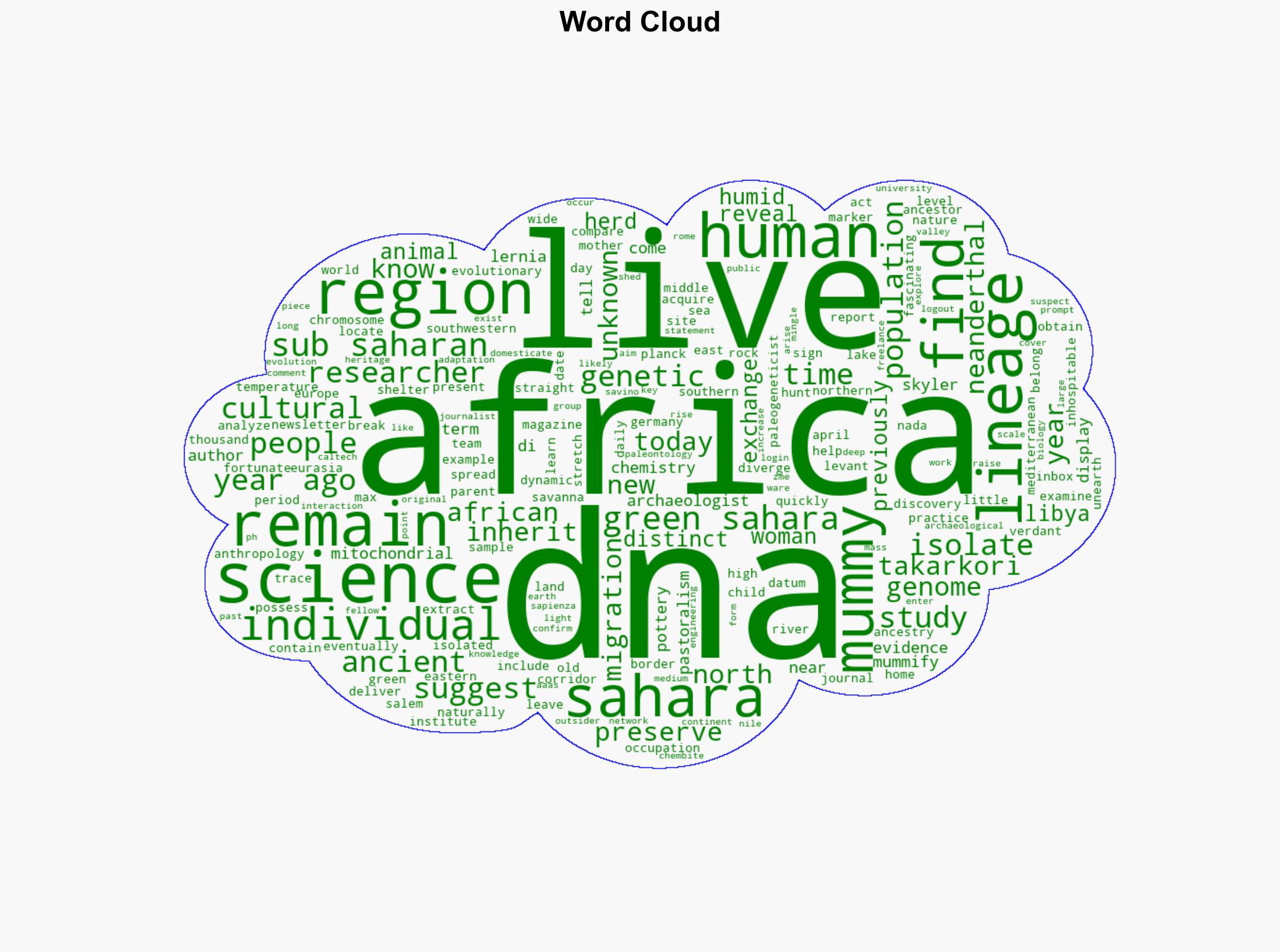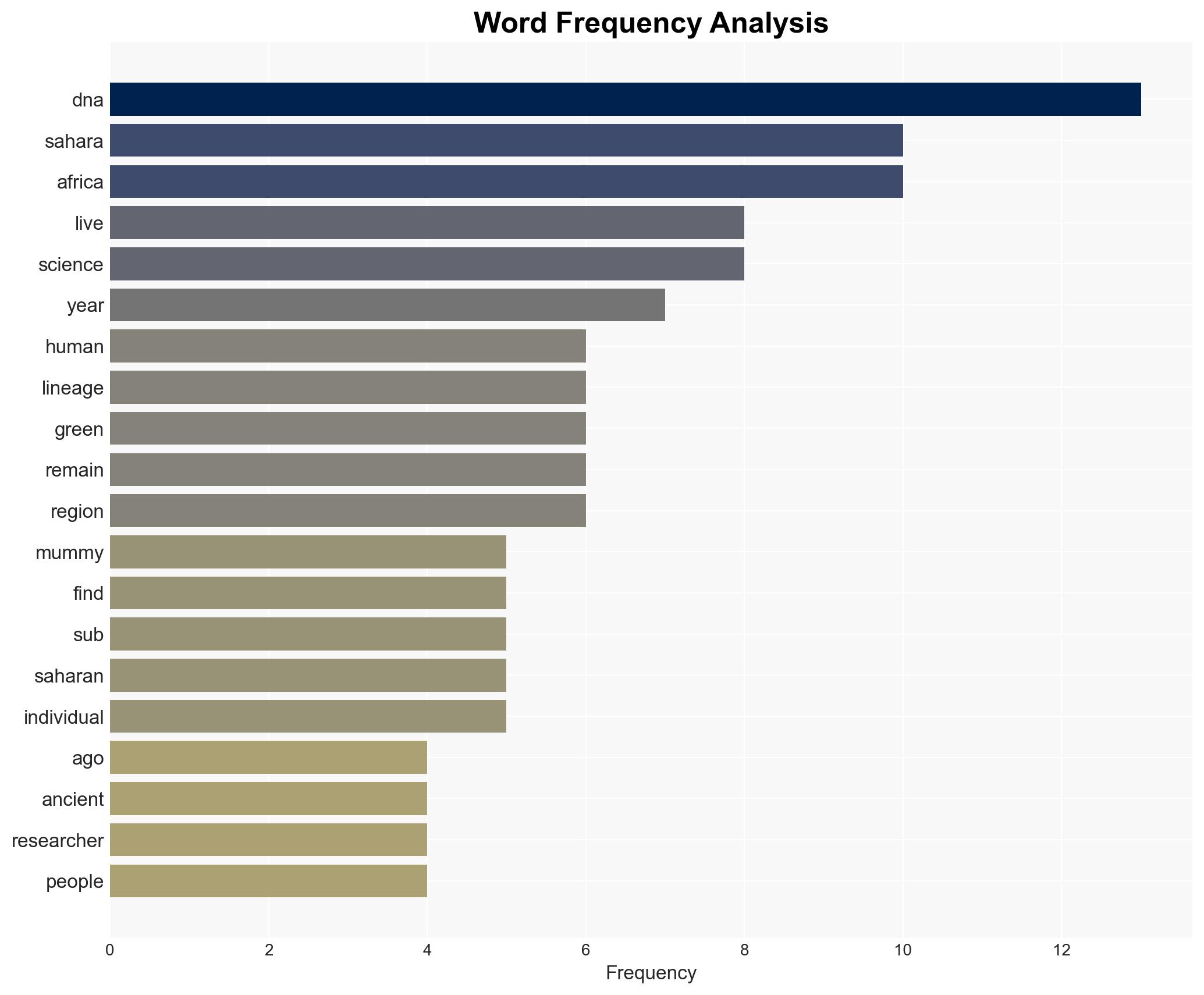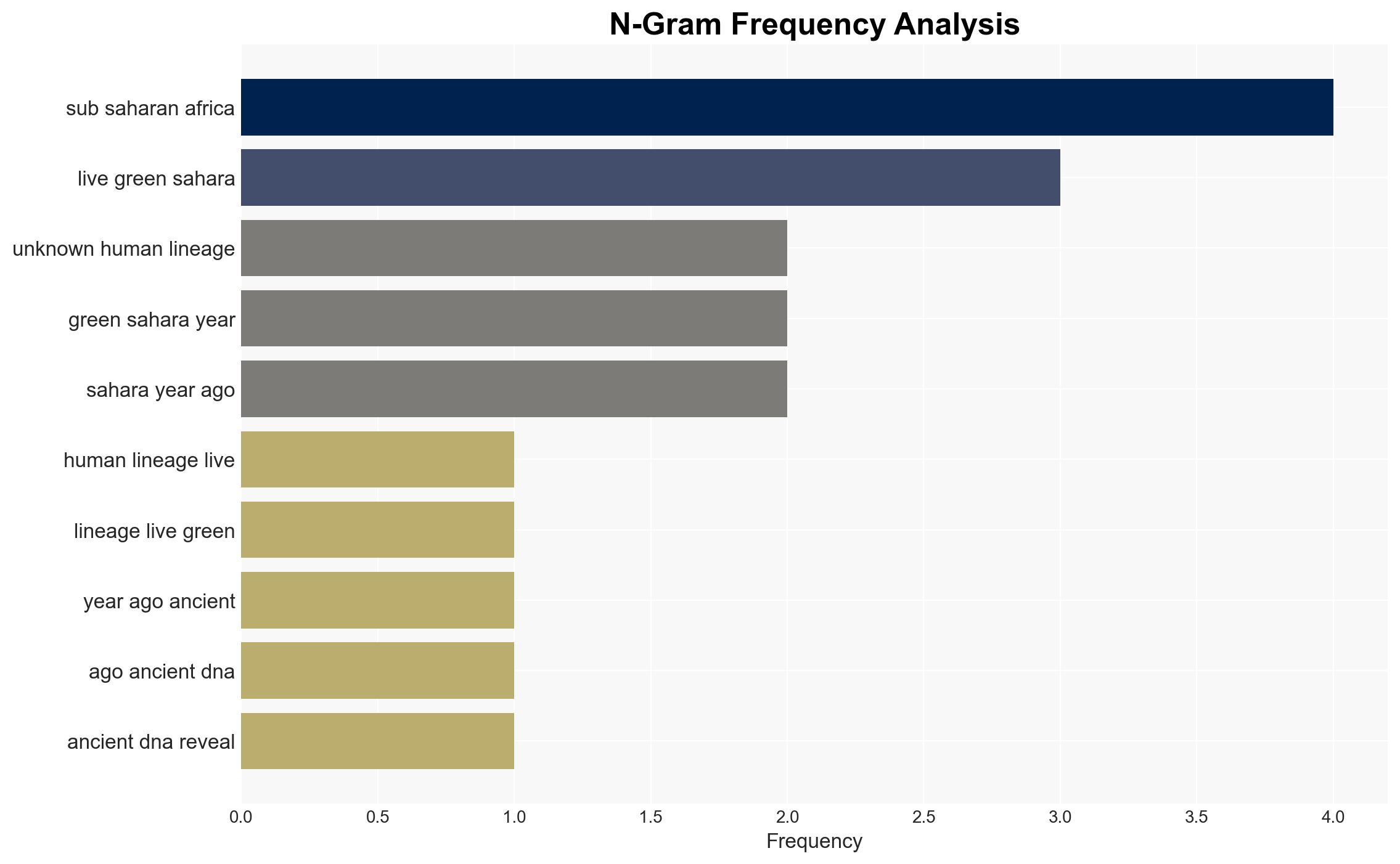Unknown human lineage lived in ‘Green Sahara’ 7000 years ago ancient DNA reveals – Live Science
Published on: 2025-04-04
Intelligence Report: Unknown Human Lineage Lived in ‘Green Sahara’ 7000 Years Ago Ancient DNA Reveals – Live Science
1. BLUF (Bottom Line Up Front)
Recent analysis of ancient DNA from a mummy discovered in Libya has revealed the existence of a previously unknown human lineage that lived in the ‘Green Sahara’ approximately 7000 years ago. This lineage remained isolated in North Africa, with little genetic exchange with sub-Saharan populations. The findings suggest significant implications for understanding human migration and cultural evolution in the region.
2. Detailed Analysis
The following structured analytic techniques have been applied for this analysis:
General Analysis
The study conducted by researchers, including Nada Salem and Savino Di Lernia, utilized mitochondrial DNA analysis from naturally mummified remains found at the Takarkori rock shelter in southwestern Libya. The DNA revealed a distinct North African lineage, diverging from sub-Saharan populations over 7000 years ago. Despite evidence of cultural exchanges, such as pottery and pastoralism, genetic data indicates limited migration through the Sahara during this period.
3. Implications and Strategic Risks
The discovery of an isolated lineage in the ‘Green Sahara’ has several implications:
- Challenges existing theories of human migration across Africa, suggesting more complex patterns of isolation and interaction.
- Potentially alters the understanding of cultural diffusion and technological advancements in prehistoric North Africa.
- May influence current anthropological and archaeological research priorities, affecting funding and resource allocation.
4. Recommendations and Outlook
Recommendations:
- Encourage further genetic studies in the Sahara to uncover additional isolated lineages and migration patterns.
- Promote interdisciplinary research combining archaeology, genetics, and climate science to better understand historical human adaptation.
- Support initiatives for preserving and studying ancient DNA in regions with challenging climates.
Outlook:
Best-case scenario: Enhanced understanding of human history leads to breakthroughs in anthropology and genetics, fostering international collaboration.
Worst-case scenario: Limited funding and geopolitical instability hinder further research, leaving gaps in historical knowledge.
Most likely outcome: Continued research gradually uncovers more about human migration and adaptation, influencing academic and cultural narratives.
5. Key Individuals and Entities
The report mentions significant individuals such as Nada Salem and Savino Di Lernia, as well as organizations like the Max Planck Institute for Evolutionary Anthropology and the Sapienza University of Rome. Their contributions are crucial to advancing the understanding of human history in the Sahara.





